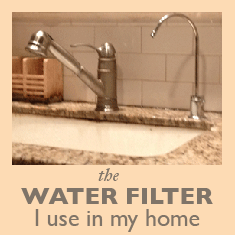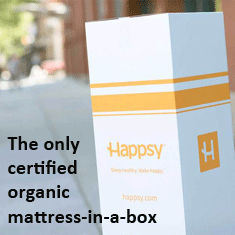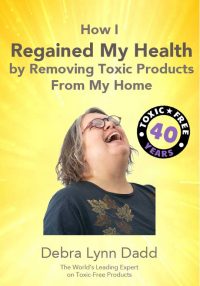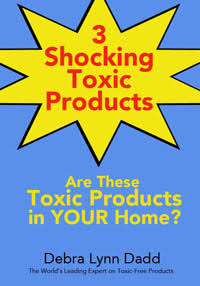
Water | Swimming Pools
Indoor Air Quality and Pesticide Application
Question from Mark
1)Is it possible for a house that was once sprayed indoors with pesticides to have wholesome air quality inside?
2)Or is the indoor air quality permanently impaired by just one application of pesticides?
3)Is there any way pesticide residues can be removed once a house has been sprayed?
Debra’s Answer
1) It depends on the pesticide used and the amount applied. If it is a less toxic pesticide and a small amount was applied, it will probably break down over time. If it was a large amount and very toxic, maybe not.
2) See #1 above.
3) Pesticides break down over time. Heat will break them down faster. Also, you can contact the pesticide company and ask them how to clean it up.
Toxic Exposures and Pets
Question from Pam Wheelock
I just wanted to share this article I wrote for our newsletter.
Pam 
Nose Deep in Our World
Cats and dogs engage in many behasviors we do not. They clean themselves, using their tongues as washcloths. They eat off the floor. They are petted by guardians whose hands have been busy all day and immersed in who knows what. Their food may come exclusively from cans or plastic lined pouches. They chew on toys which contain plasticizers, heavy metals, and dyes. They sleep on foam beds soaked in flame retardants and protected with stain proofing chemicals. They walk without shoes on lawns and other surfaces which may harbor all kinds of trace chemicals. Basically– they are nose deep in the big wooly world, chemicals and all.
The Price They Pay: Our Pets’ Chemical Burden
Have you ever heard of the Environmental Working Group (EWG)? You can find out much more about them here, But for now just remember they are a not-for-profit research and educational organization concerned about the impact of industrial toxins on the world’s health.
Debra’s Answer
Clothing Waste
Question from R.M.
HI Debra and Green Living Blog Readers:
For example, I can either pay a couple thousand for organic mattresses or insurance will cover the 3″ polyurethane foam mats.
I have several articles of clothing which are no longer useful. They are stained, or ripped, or otherwise inappropriate for donating as used clothing.
I do not want these articles to end up in the landfill, but they are taking up valuable space in my bedroom. I have already repurposed holey socks into rags, and may cut up a few t-shirts for that use as well, but I don’t need many more rags, and I have a pair of unwearable jeans that is plaguing me. Any creative suggestions would be much appreciated.
Debra’s Answer
Well, oddly enough, the answer is to take your nonservicable clothing to the Goodwill or Salvation Army.
When they get donations of clothes that are too worn to re-sell in their shops, these organizations send the clothing to “rag sorters” that specialize in recycling fabrics of all types and sizes. About half the clothing gets sold in developing countries, while garments like cotton t-shirts are turned into wiping and polishing clothes and sold to industries and consumers. Some textiles are shredded into fibers used to make new products, such as fine quality “rag” paper, and blankets.
Descoware
Question from RBES
I have a few descoware pots from the 1970’s. The enamel coating is a little scratched on most of them. Are these safe to use? How can I find out if the coatings have lead in them? Thanks for any information you can give me.
Debra’s Answer
You can find out if they have lead in the coating by using a Lead-Check kit, which is sold now at Home Depot, among other places. It’s only $5. But I’ve never heard that enamel pots contain lead.
Chipped enamel isn’t a problem, but if it exposes the metal beneath, I would stop using it. The metal isn’t intended to have contact with food.
Bulk non-plastic storage containers
Question from Charise
Hi Debra,
We bake everything homemade, and I often buy grains in quantities of 50 lbs. or more to save money.
I can’t seem to find a food grade storage container that isn’t plastic that will hold 25-50 lbs. at a time.
Do you know of a source?
Thanks,
Charise
Debra’s Answer
Readers?
Bisphenol A (BPA) in our bottles and cans
Question from jeanespeaks
After Canada banned Bisphenol A, and placed it on their hazardous chemical list, I became concerned, since I know that besides being present in plastic #7 (i.e. Baby Bottles and other hard plastics), BBA is also routinely used in cans.
So I did a little research and found out that even the healthy organic canned food brands that I buy at WholeFoods ALL use
Bisphenol A, with the exception of two – namely EDEN beans, and SANTA BARBARA OLIVES.
ALL other brandd, such ast WholeFoods’very own 365 label, Amy’s, Westbrae, and Muir Glen, to name a few of my favs, eacj CONTAIN Bisphenol A. I’m told that canned tomato sauce is the worst offender, with the highest levels and most interactivity between the BPA and the product, due to the acidic nature of tomatoes.
I had initially read that all Trader Joes brand cans do not have BPA, but when I contacted TJs direct to verify that actually told me that that is not the case – the ONLY Trader Joe’s brand products that do NOT contain BPA are canned fish items.
It seems that some major “independent” studies out of Japan and Europe in recent days have concluded that BPA is NOT harmful, however, Canada maintains that BPA is harmful in that it can cause reproductive problems and even cancer.
Debra’s Answer
Dry Cleaned Thrift Shop SIlk
Question from jenbooks
Hi Debra, as I become more aware of chemicals in my environment, I am aware that some pretty silk shirts I have purchased at high end thrift shops in NYC were dry cleaned. I’ve actually washed them but I can still smell the dry cleaning chemical. Is there any good way to remove it or is it, like fabric softener, bonded to the fabric for a long time?
Thanks.
Debra’s Answer
This is one of the problems with thrift store clothes. While it’s good for the environment to buy used clothing that is still serviceable, they may have residues of perfume, pesticides, and many other unknown chemicals.
Dry cleaning chemicals, however, are extremely volatile, and would evaporate complete fairly quickly after being cleaned (like within days). I can’t think of a reason why it would be bonded to the fabric.
Are you sure it’s a dry cleaning chemical?
Try hanging them out in the sun for a few days and see if that takes care of it.
Hand Made Furniture
Question from Kristen
My husband & I are making a couch. He is constructing the wooden frame & I will be sewing the cushions. Does anyone have any suggestions for filler material? I’ve priced 100% cotton or 100% wool batting that I could build layer upon layer, but am wondering if there is any thick cushion material out there that is no full of poly..?
Debra’s Answer
I’d go with the cotton or wool. I’ve used both with good results.
Readers, any other suggestions?
Nut Grass
Question from Monica
To let my land regenerate, I let our 3/4 acre garden area rest for a year – now I am invaded with nutgrass! I have tilled until I’m worn out and seem to be making NO progress with it. I’ve gardened organically and don’t want to begin spraying chemicals to kill it. Has anyone had success combatting nutgrass naturally. My garden is FULL of it!
Debra’s Answer
Readers?
Cabinet Refacing
Question from nancy rose
I want to reface my kitchen cabinet doors inexpensively and safely. A salesman said that using thermafoil vinyl is the way to go. Has anyone used that in their kitchen? Is it durable 10 years from now? Is it safe-emmisions, etc.?
thank you
Debra’s Answer
I learn so much about what’s toxic out there from reading your questions!
First, I want to say that refacing is a great option for a kitchen remodel. It reuses your existing cabinets, and just puts on new doors and drawers, with an application of a “veneer” to your cabinets so they match. Saves money and materials, so it’s good for the environment as well.
But watch out. This thermofoil vinyl is made from polyvinyl chloride (PVC), one of the most toxic and polluting plastics on the planet. I talked to the manufacturer, and was told that it is about like peel-and-stick shelf paper, only thicker. So it’s flexible, and flexible plastics give off more plasticizers. You just peel off the back and stick it on the cabinet (carefully, of course) and the cabinets look like wood.
So if you are considering a reface job, make sure the cabinets and drawers are real wood, not “laminate,” and a real wood veneer is being applied to the cabinets. And while you’re asking questions, check on the finish and the adhesive used to glue down the veneer.






